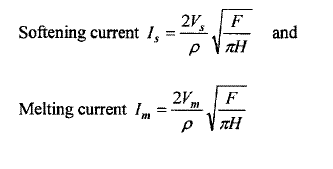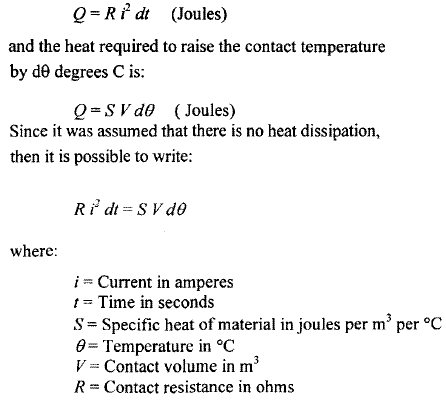- This topic has 1 reply, 1 voice, and was last updated 2 years, 11 months ago by .
-
Topic
-
How can we choose suitable contact resistance for an electrical connection?
How can we choose suitable contact resistance for an electrical connection?
Viewing 1 replies (of 1 total)
Viewing 1 replies (of 1 total)
- You must be logged in to reply to this topic.

 The significance of the above is that now we can determine for a specific material the maximum currents at which either softening or melting of the contacts would occur, and consequently the proper design to avoid the melting and welding of the contacts can be made. The equations for the maximum softening and melting currents are:
The significance of the above is that now we can determine for a specific material the maximum currents at which either softening or melting of the contacts would occur, and consequently the proper design to avoid the melting and welding of the contacts can be made. The equations for the maximum softening and melting currents are:  The maximum softening and melting currents as defined by the above equations are applicable to the point of contact and are useful primarily for determining the contact pressure needs. However when dealing with the condition where the contacts are required to carry a large current for a short period of time it is useful to define a relationship between time, current and temperature for different materials. Below is given a general derivation for a general expression that can be used for determining the temperature rise in a contact. First, it will be assumed that for very short times all the heat produced by the current is stored in the contact and is therefore effective in producing a rise in temperature. Then the heat generated by the current i flowing into a contact of R ohms during a dt interval is:
The maximum softening and melting currents as defined by the above equations are applicable to the point of contact and are useful primarily for determining the contact pressure needs. However when dealing with the condition where the contacts are required to carry a large current for a short period of time it is useful to define a relationship between time, current and temperature for different materials. Below is given a general derivation for a general expression that can be used for determining the temperature rise in a contact. First, it will be assumed that for very short times all the heat produced by the current is stored in the contact and is therefore effective in producing a rise in temperature. Then the heat generated by the current i flowing into a contact of R ohms during a dt interval is: 